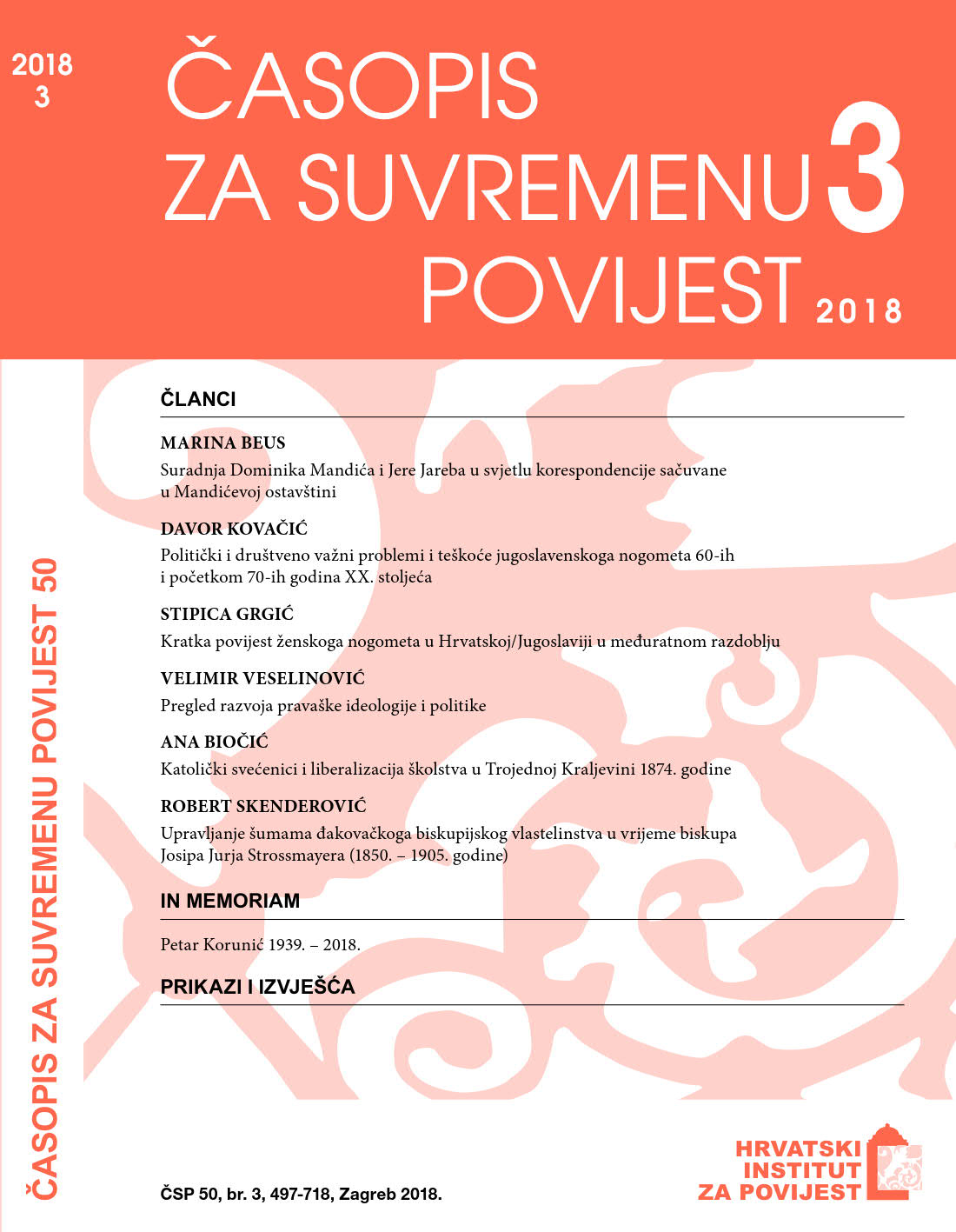Upravljanje šumama đakovačkoga biskupijskog vlastelinstva u vrijeme biskupa Josipa Jurja Strossmayera (1850. – 1905. godine)
Administration of the Forests of the Đakovo Bishopric Estate in the Time of Bishop Josip Juraj Strossmayer (1850–1905)
Author(s): Robert SkenderovićSubject(s): 19th Century, Pre-WW I & WW I (1900 -1919), Between Berlin Congress and WW I
Published by: Hrvatski institut za povijest
Keywords: Josip Juraj Strossmayer; Đakovo Bishopric estate; forestry; segregation;
Summary/Abstract: Josip Juraj Strossmayer, Bishop of Đakovo and famous Church dignitary, politician, and patron, drew his great monetary donations for culture, science, and education from the rich forests of the Đakovo Bishopric estate. The forests of this estate represented the majority of his income, and the auctions at which individual sections of the forest were auctioned became famous. The huge forest areas that were cut down after this gave Strossmayer’s opponents an opportunity to foster doubts about the legality of the administration of the Đakovo estate. In two cases, these doubts almost led to severe consequences. In 1876, the Đakovo Subcounty decided to halt the sale of the large forest Mađareva bara for 400,000 forints that Strossmayer had already negotiated, while in 1889 the administrative board of the Virovitica County decided to sequester all the forests of the bishopric estate. However, in both cases Strossmayer managed to defend himself before state institutions and prove that the accusations against him and the estate administration were mostly unfounded. The vast areas of the forest that were cleared during his administration of the bishopric estate were mostly covered by old oaks that were economically ripe for logging. At the same time, Strossmayer conducted the segregation of pastures and forests with former urbarial communes due to which he also had to sacrifice large areas of forest. Archival data shows that, on the whole, Bishop Strossmayer administered the forests of the bishopric estate well, successfully conducted the segregation with the urbarial communes, and left the estate of the bishops of Đakovo in good order. Analysis of Strossmayer’s administration of the bishopric’s forests points to the importance of the topic of the colonisation of new immigrants, whom the bishop brought in, and the anthropisation of large forest areas that were envisioned as places for clearing so that new villages could be built there. The sources presented in this work also show that anthropisation was necessary from the standpoint of the economic interests of the estate and the whole of Slavonia, which was still economically undeveloped and fairly uninhabited at the turn of the 20th century.
Journal: Časopis za suvremenu povijest
- Issue Year: 50/2018
- Issue No: 3
- Page Range: 657-675
- Page Count: 19
- Language: English, Croatian

